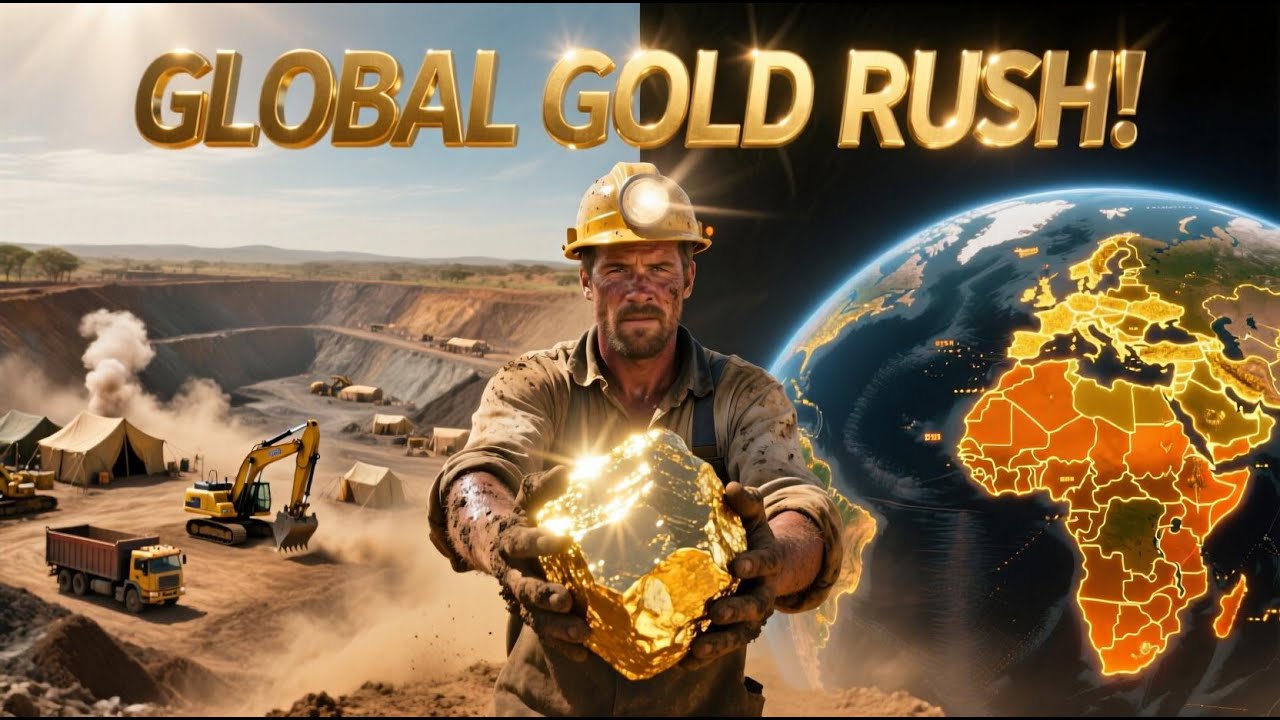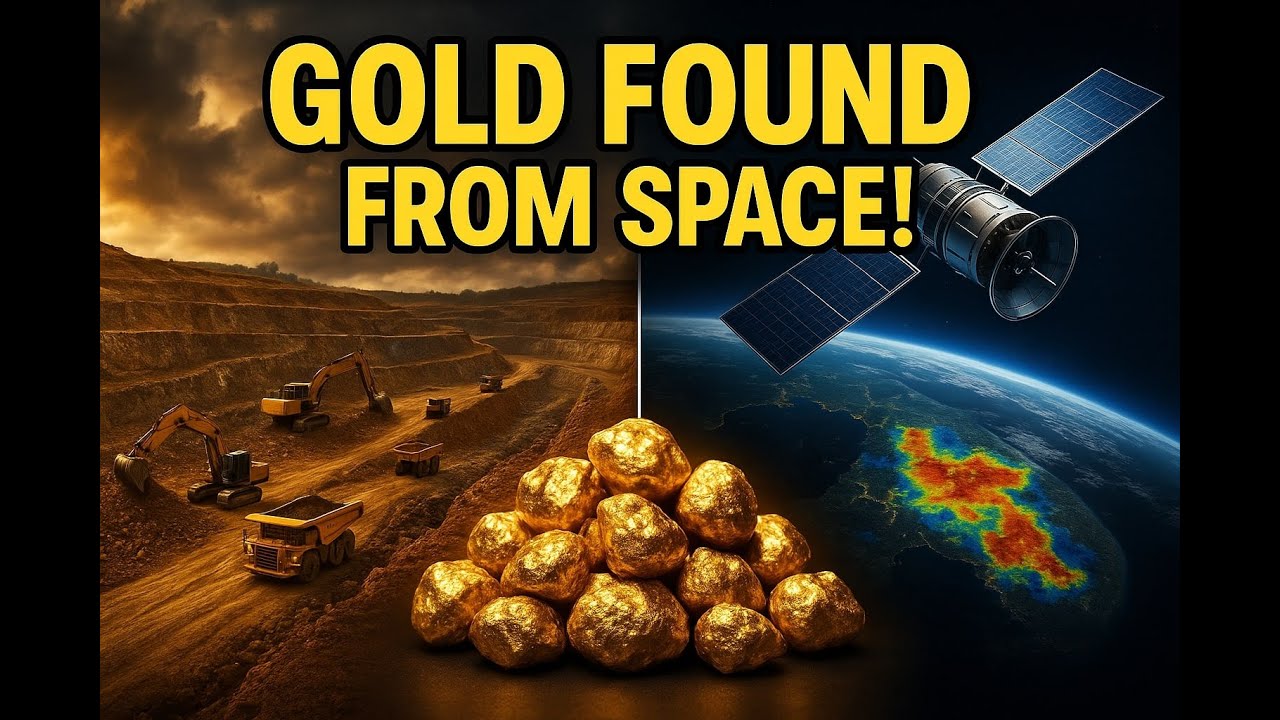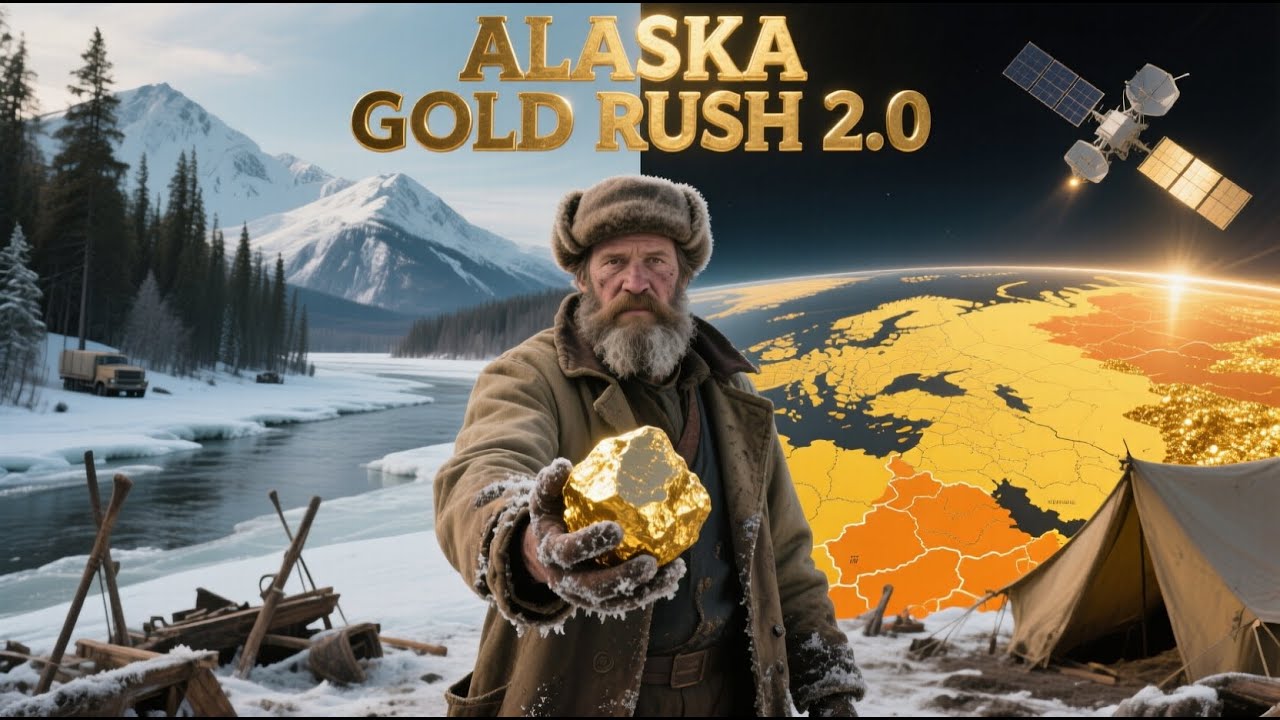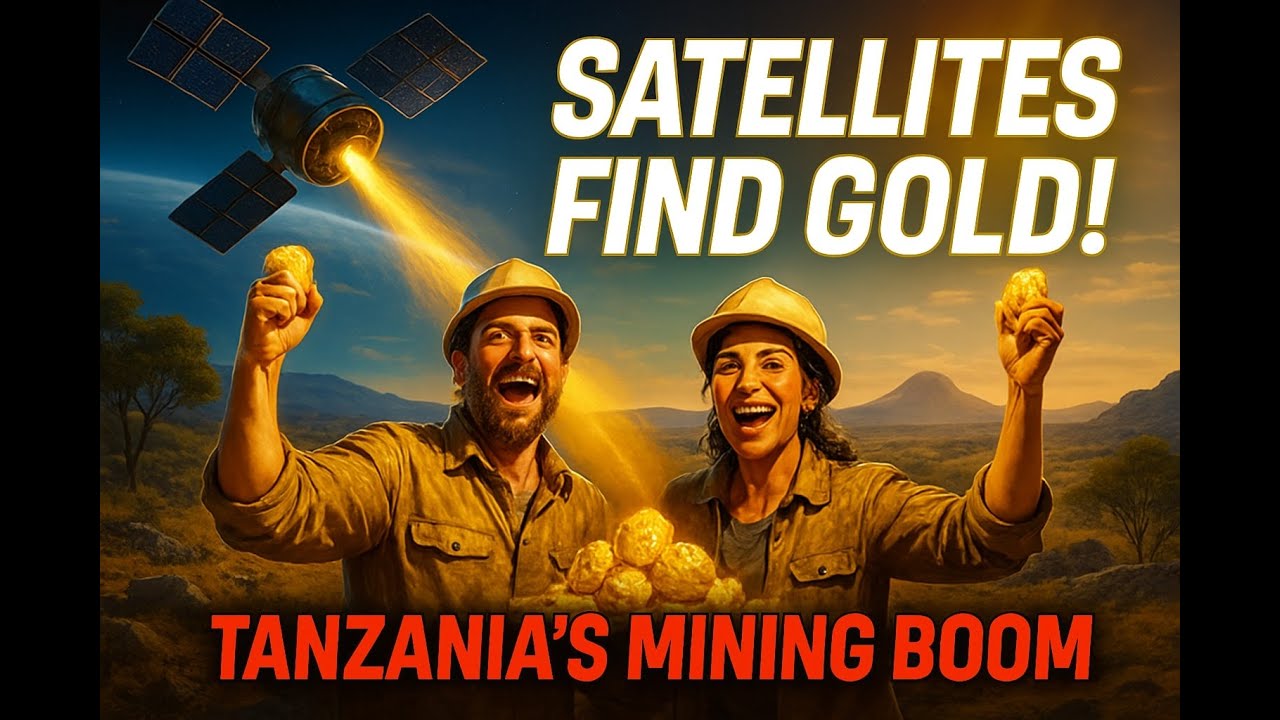Oldest Gold Mine, Top Gold & Biggest Diamond Mine 2026: Mining’s Ancient Legacy and Modern Innovations
“The world’s oldest gold mine, Mapungubwe, dates back over 1,000 years, setting early standards for gold extraction.”
- Mining’s History: The Oldest Gold Mine in the World
- From Ancient Techniques to Today: Mining Evolution
- Top Gold Mines in the World 2026
- The Biggest Diamond Mine in the World: Jwaneng, Botswana
- Technology, Satellite Monitoring & Sustainable Mining
- Comparative Summary Table: Gold & Diamond Mines
- How Farmonaut Empowers Mining with Satellite Technology
- Mining, Local Regions & Global Societies: Social, Economic, and Environmental Impacts
- Frequently Asked Questions: Gold & Diamond Mining 2026
Mining’s History: The Oldest Gold Mine in the World
The journey of gold and diamond mining stretches thousands of years back, shaping civilizations, economies, and technologies across every continent. Among all fascinating sites, the oldest gold mine in the world is traced to the Nubian Desert of Egypt, with workings dating over 5,000 years to an age of immense progress and ingenuity. Archaeological evidence reveals the ancient Egyptians employed sophisticated mining techniques, extracting gold for ceremonial, ornamental, and economic purposes.
These early societies recognized gold’s economic value not just as currency, but as a symbol of faith and cultural significance. The knowledge and resilience of Nubian miners laid the foundation for gold mining as an essential human enterprise—its legacy intertwining modern mining with ancient heritage as we move forward.
“By 2026, Muruntau mine produces over 2 million ounces of gold annually, leading global output with advanced technology.”
Oldest Gold Mine in the World: The Nubian Desert, Egypt
- Nubian Desert Location: Eastern Sahara, stretching into present-day Egypt and Sudan.
- Era: Mining sites date back over 5,000 years (circa 3,000 BCE).
- Techniques: Use of stone hammers, fire-setting, and early water management to extract gold.
- Cultural Role: Gold was intertwined with Egyptian rituals, tombs, and international trade.
- Modern Context: Egypt continues to explore deposits using drones, satellite imaging, and environmental safeguards, expanding sustainable exploitation.
Today, there are concerted efforts to both preserve the rich heritage of these early mining sites and to employ modern technology in expanding mineral extraction within ecological and social limits.
From Ancient Techniques to Today: The Technological Evolution of Mining
As gold extraction advanced, so did the methods, reflecting a remarkable evolution in both technology and sustainable development practices. The oldest workings relied on human labor, manual tools, and surface extraction. Over millennia, innovation shaped mining sectors across the world, leading to:
- Deep-Level Mining: Developed especially in South Africa, unlocking new volumes of ore from extreme depths.
- Open-Pit Techniques: Perfected in Uzbekistan’s Muruntau mine, enabling extraction at an enormous scale and efficiency.
- Satellite & AI Monitoring: In the 2020s, satellite imagery, advanced sensors, and AI algorithms maximize resource management and ecological oversight.
- Environmental Innovations: Closed-loop water systems, reclamation plans, and real-time carbon tracking help mitigate environmental impacts.
These advances underscore how mining, particularly for gold and diamond deposits, continues to balance ancient significance with modern innovation.
Top Gold Mines in the World (2026): Production, Innovation & Environmental Practices
The top gold mines in the world are immense not only in annual production, but in the role they play in global economic systems and in driving sustainable innovation. As of 2025–2026, several key mines illustrate the state-of-the-art in technology and management:
1. Muruntau Gold Mine – Uzbekistan
- Largest open-pit gold mine worldwide, with over 2 million ounces (approx. 55-60 tons) produced annually in 2026.
- Operational Excellence: Muruntau’s sheer scale and high efficiency are a benchmark for mine management.
- Sustainability: Adoption of solar arrays, dust suppression, and waste recycling.
-
Technological Highlights (2025):
- Automated haulage fleets and remote processing control rooms.
- AI-powered geochemical mapping for targeted deposits.
- Satellite monitoring for land disturbance and environmental compliance.
2. Grasberg Gold Mine – Indonesia
- Among the top gold mines in the world for both gold and copper output.
- Continues as a global leader in 2025 due to its production scale and logistical complexity.
- Integrates precision drone and satellite mapping to optimize mine expansion and environmental management.
3. South Deep Gold Mine – South Africa
- One of the world’s deepest operation mines at nearly 3,000 meters below earth’s surface.
- Produces hundreds of thousands of ounces of gold every year.
- Emphasizes sustainable resource management by using advanced ventilation and water recycling systems.
- Demonstrates adaptation to different geological settings and continues to innovate in deep-level extraction practices.
Honorable Mentions: Other Notable Global Gold Mines
- Olimpiada Gold Mine (Russia): Major contributor to Russia’s gold output, integrating state-of-the-art ore-processing technologies.
- Pueblo Viejo (Dominican Republic): A leader in Latin America’s gold production, with strong focus on ecological restoration.
- Lihir (Papua New Guinea): Uses geothermal energy in operations, showcasing linkage of renewables and mining.
Did you know? Our carbon footprinting tools are helping mining operations across the globe comply with environmental goals, tracking emissions and minimizing ecological impacts. Our technology offers actionable insight for truly sustainable mining practices.
The Biggest Diamond Mine in the World (2026): Jwaneng, Botswana
Parallel to gold, diamond mining remains a sparkling core of the global resource sector. The biggest diamond mine in the world is the Jwaneng mine in Botswana—famous for both the immense value of its deposits and its commitment to sustainable, socially responsible extraction through 2026 and beyond.
Jwaneng Diamond Mine: Global Leader for Value and Sustainability
- Location: Southern Botswana, opened in the early 1980s, now producing approximately 11–12 million carats of diamonds annually.
- Title: The richest diamond mine by value, globally.
- Technology: Advanced sorting systems, real-time satellite and drone surveillance, and AI-powered ore assessment tools.
- Sustainability: Environmental stewardship, community infrastructure investment, and ESG (Environmental, Social, and Governance) compliance form the backbone of operations.
- National Context: Jwaneng’s success continues to bolster Botswana’s reputation as a model for responsible resource management.
Application of advanced technology and best practices in Jwaneng underlines how the mining sector is evolving, placing environmental and social limits at the front of operational planning, ensuring local and national benefits continue for generations.
Comparative Summary Table: Oldest Gold Mine, Top Gold Mines and Biggest Diamond Mine (2026)
| Mine Name | Location (Country) | Estimated Year Established | Estimated Annual Production (2026) | Major Technological/Innovative Practices (2025) | Sustainability Initiatives |
|---|---|---|---|---|---|
| Nubian Desert Gold Mines | Eastern Egypt / Nubia | ~3,000 BCE | Historic – ancient tonnage unknown; small-scale modern prospecting | Stone tools, fire-setting (ancient); Satellite survey, AI prospecting (modern) | Archaeological preservation, drone mapping, limited modern extraction with water conservation |
| Muruntau Gold Mine | Navoi Region, Uzbekistan | 1967 | ~2.0+ million ounces (60+ tons) gold per year | Automated fleets, satellite geochemical mapping, advanced ore sorting, dust controls | Solar power arrays, water recycling, reduced land disturbance |
| Grasberg Gold Mine | Papua, Indonesia | 1972 | ~1.1 million ounces (35 tons) gold per year | Remote-controlled mining, AI-driven production scheduling, drone site surveys | Progressive land reclamation, biodiversity offsets, climate risk adaptation |
| South Deep Gold Mine | Gauteng, South Africa | 1951 | ~250,000 ounces (7-8 tons) gold per year | Deep-level ventilation, AI-driven rock stability analysis, real-time safety monitoring | Water reuse, tailings management, advanced ventilation for worker safety |
| Jwaneng Diamond Mine | Botswana | 1982 | ~11–12 million carats diamonds per year | AI sorting, satellite and drone monitoring, automated drilling | ESG compliance, local community investment, habitat conservation |
For organizations and operators keen on traceability and compliance, our blockchain-based traceability solutions ensure transparent tracking of gold and diamond from mine to market. This builds trust and aligns with global demands for ethical sourcing and supply chain security.
Technology & Satellite Monitoring Revolutionize Gold and Diamond Mining
Modern mining is defined by advanced technology, powerful innovation, and a growing emphasis on sustainable development practices. Key trends shaping the sector through 2025–2026 include:
- Satellite-Based Monitoring: Multispectral imaging from space enables real-time tracking of mine expansion, vegetation recovery, and impacts analysis. It also guides new discoveries, especially in regions like Africa and Australia.
- AI & Machine Learning: Data-driven resource targeting, predictive models for ore grades, and automated equipment boost both efficiency and safety.
- Blockchain for Traceability: Secure, transparent supply chains meet regulatory and investor requirements for ethical mining.
- Environmental Management: Technologies help optimize water, reduce waste, and monitor emissions, making compliance with local and global ESG standards more feasible.
Farmonaut’s Role: Satellite Technology in Gold and Diamond Mining
As a pioneering satellite technology company, we at Farmonaut are uniquely positioned to provide advanced, affordable satellite and AI-based monitoring solutions for the mining sector worldwide. Our services—accessible through web and mobile platforms, as well as via comprehensive APIs—equip mine operators with unprecedented insights for resource management, environmental tracking, and operational optimization.
- Satellite Monitoring: Continuously observe remote and large-scale mines, track vegetation, water use, and detect potential compliance violations.
- AI-Jeevn Advisory System: Get real-time advice based on AI analysis of satellite data for everything from ore detection to operational risk.
- Traceability & Blockchain Integration: Securely track gold and diamond flows from origin to market, supporting transparency and anti-fraud controls.
- Environmental Impact Monitoring: Calculate carbon footprint, emissions, and support sustainable practices in mining — learn more with Farmonaut’s Carbon Footprinting.
- Fleet & Resource Management Tools: Optimize equipment deployment, fuel usage, and logistics in real-time—see how Farmonaut’s Fleet Management helps drive efficiency.
Our technology ensures the economies relying on mining can continue to develop sustainably, safeguarding natural and social heritage.
Want to integrate mining insights into your workflow?
- API Platform: For direct integration of our satellite-driven mining data, visit the Farmonaut Mining API.
- Developer Documentation: Access full API developer docs for deep-dive technical integration here.
How Satellite Technology Transforms Mining:
- Improved Exploration: Pinpoint gold and diamond deposits with unprecedented accuracy, reducing waste and environmental disruption.
- Compliance & Transparency: Real-time reporting and monitoring support regulatory compliance and answer global calls for ethical mining standards.
- Risk Mitigation: Forecasting weather, geological instability, and potential hazards keeps people and equipment safe.
Mining, Local Regions & Global Societies: Economic and Environmental Impacts in 2026
Mining’s influence isn’t limited to extraction of metals and precious stones. Across history and especially in 2025–2026, mines act as engines of local economic development and platforms for advancing sustainability:
- Infrastructure: Major mines fund new roads, schools, hospitals, and water systems—reshaping rural and frontier regions, often for remote communities.
- Skills & Innovation: Workforce training, university programs, and R&D attract long-term investment into mining regions.
- Socio-Ecological Challenges: Responsible mining must balance short-term economic value with biodiversity, climate and cultural heritage preservation. Failure to do so risks both local upheaval and negative global perception.
- Sustainable Extraction Frontiers: Sophisticated techniques including bio-mining, hydrometallurgy, and satellite-based precision resource mapping pave the way for less invasive, more productive practices.
Increasingly, environmental and social impact assessments are being mandated worldwide—with satellite technology and real-time data at the core of meaningful management.
Summary: Gold and Diamond Mining—Heritage, Technology, and Sustainable Development in 2026
The oldest gold mine in the world—the Nubian Desert of Egypt—anchors our understanding of mining’s profound influence across millennia.
Moving through history, top gold mines in world like Muruntau (Uzbekistan), Grasberg (Indonesia), and South Deep (South Africa) have emerged as titans of productivity, technological achievement, and environmental leadership.
In parallel, diamond mining—particularly in Jwaneng, Botswana—demonstrates how large-scale extraction can blend operational efficiency with robust community and ecological programs.
As mining enters 2025 and beyond, a blend of ancient wisdom and state-of-the-art innovations now reflects a drive towards sustainable development, resource management within ecological limits, and a focus on ethical value chains. Satellite technology, artificial intelligence, and blockchain-powered transparency—like those deployed by us at Farmonaut—are essential tools in achieving profitable, responsible, and scalable mining worldwide.
To thrive in a world shaped by both heritage and innovation, miners, businesses, and governments alike must embrace these advancements, ensuring resilience for generations.
Frequently Asked Questions: Gold & Diamond Mining 2026
What is the oldest gold mine in the world?
The oldest gold mine in the world is located in the Nubian Desert of Egypt. These ancient workings are over 5,000 years old and showcase sophisticated extraction techniques used by early civilizations.
Which are the top gold mines in the world in 2026?
Key top gold mines include Muruntau (Uzbekistan), Grasberg (Indonesia), South Deep (South Africa), Olimpiada (Russia), and Pueblo Viejo (Dominican Republic). Muruntau is the largest open-pit gold mine by annual production.
What is the biggest diamond mine in the world as of 2026?
The Jwaneng Diamond Mine in Botswana is the biggest diamond mine in the world by value. It yields around 11-12 million carats of high-quality diamonds every year.
How is satellite technology changing mining?
Satellite technology allows for real-time monitoring of mines, precise targeting of new gold and diamond deposits, environmental compliance, and efficient fleet management. These technologies are critical for sustainable resource development.
How does mining contribute to local regions?
Mining supports regional economies by creating jobs, funding infrastructure (like roads and schools), and generating government revenue. Responsible mining practices enhance the positive impact while mitigating environmental and social risks.
How can mining operations reduce environmental impacts?
By adopting water recycling, solar energy, closed-loop processing, and satellite-based environmental monitoring, mines can greatly reduce emissions, waste, and land disturbance—moving toward sustainable extraction.
- Large-Scale Mining Management Tools: For operational scale-up and comprehensive site analytics.
- Fleet Management Platform: For real-time logistics and machinery tracking in mining and extraction projects.
- Satellite-Based Verification for Mining Loans & Insurance: Fraud reduction and efficient financing in mining sectors.
- AI-Driven Mining Advisory Systems: For adaptive, data-driven decision support in exploration and production.













